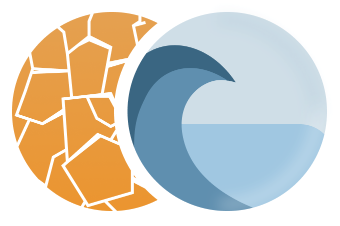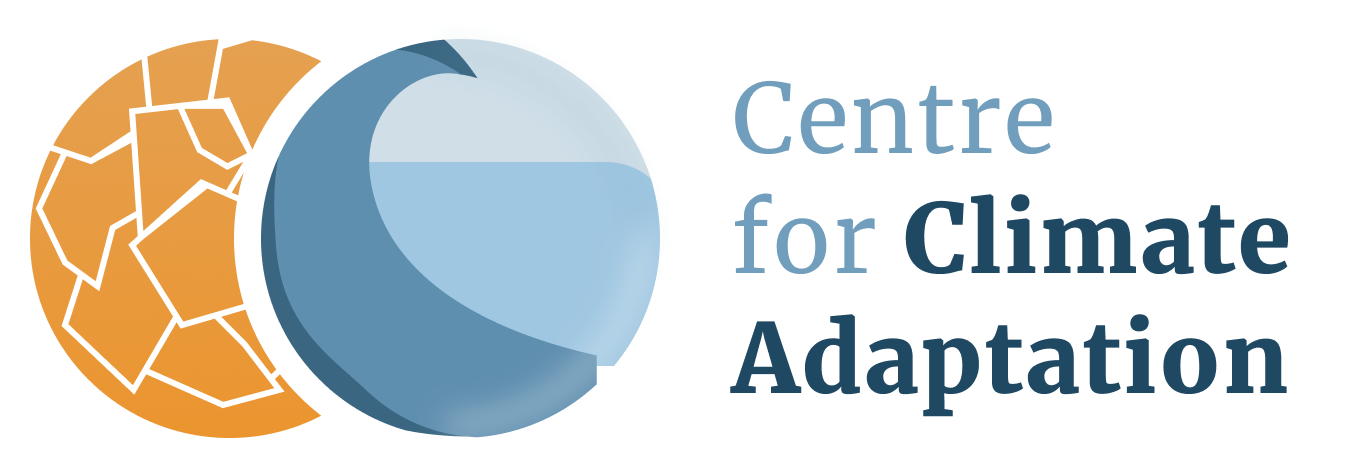Europe
Permafrost
Vulnerabilities - globally
Frozen soils and permafrost currently hold about 1700 PgC, more than twice the carbon than the atmosphere, and thus represent a particularly large vulnerability to climate change (i.e., warming) (1,6). Permafrost temperatures have increased by 0.29°C ± 0.12°C from 2007 to 2016 averaged across polar and high-mountain regions globally (12). Permafrost at 28 mountain locations in the European Alps, Scandinavia, Canada as well as High Mountain Asia and North Asia warmed on average by 0.19 ± 0.05 °C per decade between 2007 and 2016 (13).
In more and more places in the northern hemisphere, the permafrost present is thawing and our greenhouse gas emissions are the main cause of this (25). Soils of the northern permafrost zone cover only 15% of the Earth’s total soil area but store more than 30% of the global surface soil carbon in the form of organic matter (3,8). Now that the permafrost has started to thaw due to global warming, this vast reserve of permafrost carbon previously stabilized by low temperatures becomes vulnerable to microbial decomposition. As a result, significant amounts of carbon dioxide and methane are released into the atmosphere and further reinforce climate change (3,9). Evidence suggests that 5-15% of the vast pool of soil carbon stored in northern permafrost ecosystems could be emitted as greenhouse gases by 2100 under the current path of global warming (7).
It is virtually certain that the area of Northern Hemisphere permafrost will continue to decline over the first half of the 21st century in all climate change (RCP) scenarios (2). In the lower-end (RCP2.6) scenario, the permafrost area is projected to stabilize at a level approximately 20% below the 20th century area, and then begin a slight recovering trend. In the moderate (RCP4.5) scenario, the simulations that extend beyond 2100 show permafrost continuing to decline for at least another 250 years. In the higher-end (RCP8.5) scenario, the permafrost area is simulated to approach zero by the middle of the 22nd century in simulations that extend beyond 2100 (1).
In 2019 the IPCC concluded that widespread permafrost thaw is projected for this century and beyond. By 2100, projected near-surface (within 3-4 m) permafrost area shows a decrease of 24 ± 16% globally for the low-end scenario of climate change (RCP2.6) and 69 ± 20% for the high-end scenario (RCP8.5) (12).
Experts estimate that in the Northern Hemisphere permafrost regions, more than 34% of the population and 44% of the infrastructure will be at high risk by the end of this century. Between 205 billion and 572 billion US dollars in investments may be needed between now and 2085 to prevent damage to Northern Hemisphere infrastructure from thawing permafrost (27).
Wide range of effects in pan-Arctic region
The pan-Arctic permafrost region covers large parts of Alaska, Canada, Europe and Russia. This region is expected to warm at least at twice the global average during the twenty-first century. As a result, the near-surface permafrost will probably degrade extensively this century (17,24). This will have detrimental effects on northern communities, ecosystems and engineering systems (16).
Rapidly changing soil conditions
The impacts of thawing permafrost in the Arctic have been inventoried in a recent article in the journal Nature Climate Change. Focal point in these impacts is the decrease of soil moisture when permafrost degrades. From climate model simulations the authors conclude that this decrease will not occur gradually, as is thought so far, but abruptly (within a few months). This rapid change induces a number of unexpected changes in the Arctic, they conclude (16).
When permafrost starts to thaw, the water cannot penetrate deeper into the soil. The deeper permafrost acts as an impermeable barrier to soil water movement and the available liquid water (from precipitation and/or snowmelt) strongly influences soil moisture content close to the surface. Things may change rapidly when permafrost degradation penetrates deeper into the soil. Additional hydraulic pathways might become available as permafrost degrades, increasing drainage and rapidly reducing surface soil moisture (18). As a result, soil conditions rapidly become much drier.
A wide range of effects
This abrupt decrease in soil water availability will probably disrupt Northern ecosystems (19) and impact high-latitude carbon emissions (20). In addition, these abrupt changes will modify the bearing capacity of the soil and foundation characteristics, leading to potentially catastrophic situations for infrastructure (21). Given the abruptness of this change and that it is expected to occur with little or no warning, adaptation measures would need to be made very quickly to minimize impact.
Changes in river regime
River flows in northern regions are generally dominated by snowmelt during spring. When permafrost thaws to a greater depth, the melt water infiltrates deeper into the soil and is released more gradually from the soil into the rivers. As a result, the magnitude of the spring streamflow peak will decrease and flood risk in spring will decrease. During the warm season, streamflow will be higher, however, due to the gradual release of snowmelt water from soils, and the risk of flooding due to heavy rainfall events will probably increase.
Increase risk of wildfires
Drier soils heat up faster in the summer. This results in increased convective (thunderstorm) precipitation during the summer months, and an increase in lightning frequency. In sparsely populated regions, such as the Arctic, cloud-to-ground lightning is the process responsible for the ignition of most wildfires (22), which are a major concern for the safety of northern communities and infrastructure (23). More ignition events further endanger northern ecosystems and development. Besides, the abrupt decrease in soil moisture when permafrost thaw reaches deeper soil layers has a strong influence on the combustibility of fuels. In combination, these changes are projected to abruptly and substantially increase the severity of wildfires, the authors state.
Besides adapting to the new conditions in which large areas that used to be permanently frozen will no longer provide solid ground, there are major concerns about the release of large quantities of greenhouse gases as the permafrost thaws. Scientists talk of the ‘permafrost carbon feedback’: the greenhouse gases emitted from all human activities on Earth have triggered global warming, which leads to the release of more greenhouse gases from the permafrost, in turn causing additional warming and further thawing of the permafrost. This feedback is intensified by the increasingly extensive wildfires in these areas, probably due to climate change, which speed up the thawing of the permafrost and lead to the release of yet more carbon (26).
Observed loss of carbon from permafrost soils
Remarkably, field measurements of thawing permafrost soil in Greenland and Alaska (10) did not reveal detectable changes in carbon content of the soil. Scientists studied this in the Alaskan tundra and found that no detectable changes were found because the field measurements were carried out the wrong way. Carbon pools were based on fixed depths. Using a fixed depth fails to detect soil carbon changes because ground subsidence and compaction due to the thawing of the permafrost brings additional carbon that was once deeper into the fixed-depth inventory and masks losses from the original carbon pool (7).
Loss of soil carbon: 5.4% per year!
The scientists, therefore, chose a different approach. They quantified the carbon content in relation to a fixed, stable mineral component of the soil as a metric for carbon pool comparisons through time. This approach revealed completely different results. Over a five-year period they showed a loss of soil carbon in the upper 55 cm of the permafrost of 5.4% per year in tundra ecosystems at a site in Alaska where permafrost is degrading due to climate change (7). This is a surprisingly large loss of carbon. Experiments show that this loss is too large to reflect emissions of carbon dioxide and methane into the atmosphere. Part of the lost carbon seems to be transported as particulate and dissolved carbon by water flowing from the melting soil into rivulets and small streams (26). However, these results indicate that the feedback of carbon dioxide and methane from melting permafrost to climate change may be occurring faster than previously thought (7).
Decomposition of permafrost soils and the release of carbon dioxide even occur under extremely cold winter conditions (down to approximately −20 °C). This production and release of CO2 in winter is expected to increase substantially as soils continue to warm and thaw under a warming climate (15). Projections indicate that winter CO2 emissions in the northern permafrost region may increase 17% - 41% between now (reference period 2003 - 2017) and 2100 under a moderate (RCP 4.5) to high-end (RCP 8.5) scenario of climate change (14).
Vulnerabilities - The permafrost carbon feedback
In high-latitude regions of the Earth, temperatures have risen 0.6 °C per decade, twice as fast as the global average (4). The resulting thaw of frozen ground exposes substantial quantities of organic carbon to decomposition by soil microbes (3). The permafrost region contains twice as much carbon as there is currently in the atmosphere (5,6). A substantial fraction of this material can be mineralized by microbes and converted to carbon dioxide (CO2) and methane (CH4) on timescales of years to decades. At the proposed rates, the observed and projected emissions of CH4 and CO2 from thawing permafrost are unlikely to cause abrupt climate change over a period of a few years to a decade. Instead, permafrost carbon emissions are likely to be felt over decades to centuries as northern regions warm, making climate change happen faster than we would expect on the basis of projected emissions from human activities alone (5).
Abrupt permafrost thaw occurs when warming melts ground ice, causing the land surface to collapse into the volume previously occupied by ice. This process, called thermokarst, alters surface hydrology. Water is attracted towards collapse areas, and pooling or flowing water in turn causes more localized thawing and even mass erosion. Owing to these localized feedbacks that can thaw through tens of metres of permafrost across a hillslope within only a few years, permafrost thaw occurs much more rapidly than would be predicted from changes in air temperature alone. Abrupt thaw is an important mechanism of rapid permafrost degradation, yet abrupt thaw is not included in large-scale models, suggesting that important landscape transformations are not currently being considered in forecasts of permafrost carbon–climate feedbacks. This is in part due to the fact that we do not know at this stage what the relative importance of abrupt to gradual thaw across the landscape is likely to be (5,6).
European mountain permafrost
Mountain permafrost constitutes 30% of the global permafrost area (29) and spans low to high latitudes in both hemispheres and all continents.
The warming of mountain permafrost was studied across Europe for recent 10- and 20-year periods (2013–2022 and 2003–2022) at 5, 10 and 20 m depth. Data were analysed for 64 boreholes at 39 sites in European mountain permafrost regions at elevations between 275 and 3800 metres above sea level. These boreholes are in nine countries: Norway (including Svalbard), Sweden, Iceland, the Alps of Austria, Germany, Switzerland, Italy and France, and the Spanish Sierra Nevada (28).
These data show that permafrost in European mountains has generally warmed this century. This is observed across all regions, depths and time periods considered in the analyses. For the latest available decade of data, decadal mean permafrost warming rates at 10 m depth are 0.36 °C in the European Alps, 0.40 °C for Svalbard, 0.63 °C for Scandinavia, and 0.2 °C for Iceland. For 42% of these permafrost time series, the warming rate is higher than 0.5 °C per decade. At depths greater than 10 m and over a longer time period, calculated permafrost warming rates are generally lower (28).
References
The references below are cited in full in a separate map 'References'. Please click here if you are looking for the full references for Europe.
- IPCC (2014)
- Caesar et al. (2013); Koven et al. (2013), both in: IPCC (2014)
- Schuur et al. (2015)
- IPCC (2013), in: Schuur et al. (2015)
- Zimov et al. (2006); Tarnocai et al. (2009), both in: Schuur et al. (2015)
- Turetsky et al. (2019)
- Plaza et al. (2019)
- Hugelius et al. (2014), in: Plaza et al. (2019)
- Ping et al. (2015); Schaefer et al. (2014), both in: Plaza et al. (2019)
- Elberling et al. (2013); Sistla et al. (2013), both in: Plaza et al. (2019)
- Vonk and Gustaffson (2013), in: Plaza et al. (2019)
- IPCC (2019a)
- Biskaborn et al. (2019), in: IPCC (2019b)
- Natali et al. (2019)
- Schadel et al. (2016); Fisher et al. (2014); Commane et al. (2017); Elberling and Brandt (2003); Schuur et al. (2015), all in: Natali et al. (2019)
- Teufel and Sushama (2019)
- Koven et al. (2013), in: Teufel and Sushama (2019)
- Liljedahl et al. (2016); Perreault et al. (2016), both in: Teufel and Sushama (2019)
- Wrona et al. (2016), in: Teufel and Sushama (2019)
- Lawrence et al. (2015), in: Teufel and Sushama (2019)
- Streletskiy et al. (2012), in: Teufel and Sushama (2019)
- Stocks et al. (2002), in: Teufel and Sushama (2019)
- McGee et al. (2015), in: Teufel and Sushama (2019)
- Tanski et al. (2019)
- Gudmundsson et al. (2022)
- Kuklina et al (2022); Talucci et al. (2022)
- Jin et al. (2024)
- Noetzli et al. (2024)
- Gruber (2012); Obu et al. (2019), both in: Noetzli et al. (2024)




